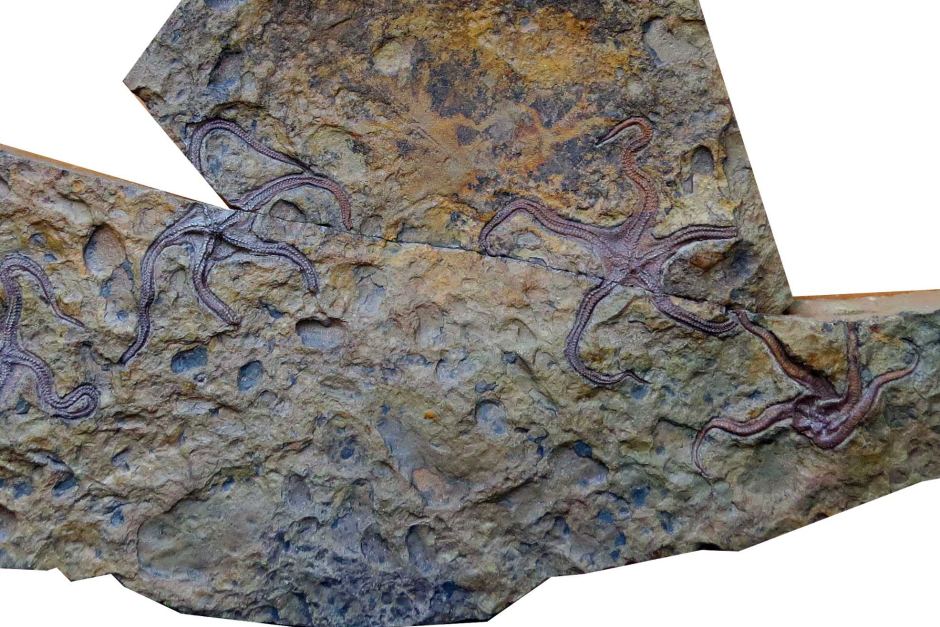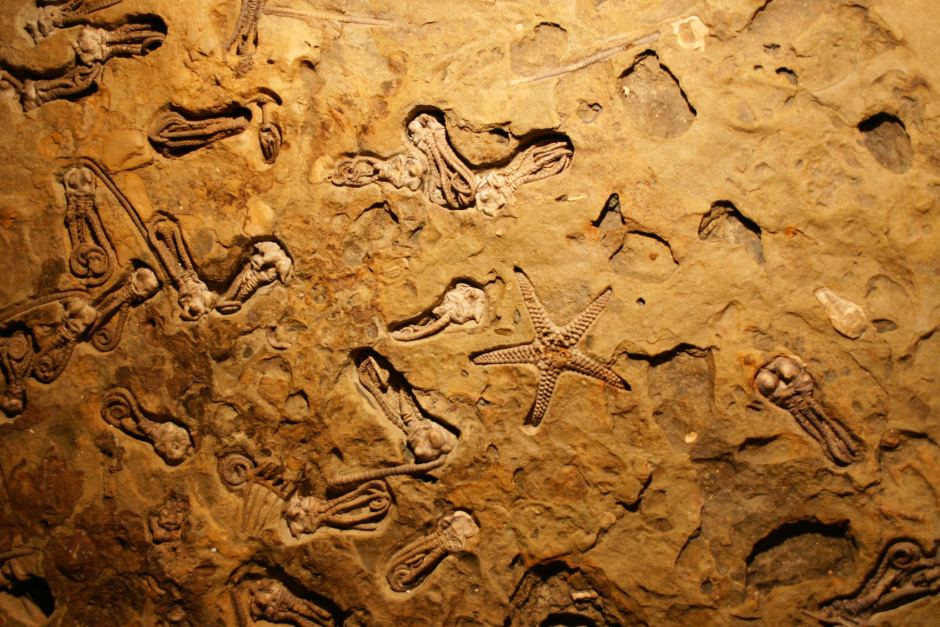@WFS,World Fossil Society,Riffin T Sajeev,Russel T Sajeev
A new species of ancient starfish-like sea creature has been discovered in a remote town nearly 200 kilometres from the ocean by University of Western Australia, Curtin University and University of Cambridge researchers.
Brittle stars, or ophiuroids, are closely related to starfish.More than 2,000 species are found in oceans today but the new species, Teleosaster creasyi, dates back hundreds of millions of years.
University of Western Australia (UWA) Earth Sciences researcher Dr Aaron Hunter said the discovery was the first time brittle star fossils had been recorded in WA.Dr Hunter said the fossil site, 173km east of Carnarvon, was one of the most spectacular fossil sites in the world.
“It’s quite exceptional,” he said.
“They have been buried in those rocks, deep down, for millions and millions of years.”They are beautifully preserved … as if they died yesterday.”

Teleosaster creasyi is the first brittle star described from the fossil record in WA.
Supplied: Kenneth McNamara
“You can see them as if they have been flattened on the rocks.”Dr Hunter said north-west Australia was recognised for its fossils.
“If you go to areas of the north-west of WA you find fossils everywhere,” he said.
“You just need to know where to look.”
Bigger and more primitive models:Dr Hunter said the fossils were found about 15 years ago but it had taken a long time for scientists to establish their significance to the WA fossil record.
The brittle stars are about the size of saucers, which Dr Hunter said was more than 10 times the size of other species.
Some ophiuroids grow to the size of dinner plates.Dr Hunter said archaic brittle stars were primitive versions of the starfish we see today.
“Today we’re looking at … the advanced model,” he said.”[Ancient brittle stars] are like the great, great, great, great grandparents of modern-day ophiuroids.”

The fossil slab provides a snapshot of marine life 275-million-years ago.
Supplied: Kenneth McNamara
‘Not unusual’ to find marine fossils inland Dr Hunter said it was not unusual to find ancient sea creatures so far inland.

The Gascoyne Junction fossil slab provides a snapshot of ancient Australian marine life.
Supplied: Kenneth McNamara
“Although today we might think it’s strange that they are … miles from the sea, in the past that was the sea,” he said.
“When they were preserved, Australia was a lot further south and it was a lot colder. It was like Antarctica today.”
Dr Hunter said over a very long period of time, Australia moved up to the country’s present position and the rocks containing the fossils were slowly brought to the surface.The discovery sheds new light on the evolution of brittle stars.
“These ones have survived longer [than previously thought]”, Dr Hunter said.
“The reason is … because they were living in this cold water, hiding away from the tropical world where things were evolving faster.”He said researchers hope the slab of siltstone the brittle stars and other fossilised marine life were preserved in could be displayed at the new Western Australia Museum.
Source:ABC North West WA,By Lisa Morrison
@WFS,World Fossil Society,Riffin T Sajeev,Russel T Sajeev



 August 16th, 2017
August 16th, 2017  Riffin
Riffin  Posted in
Posted in  Tags:
Tags: 